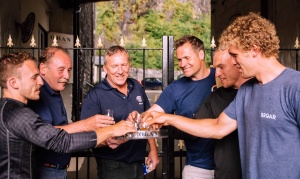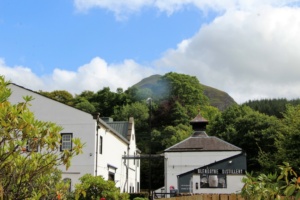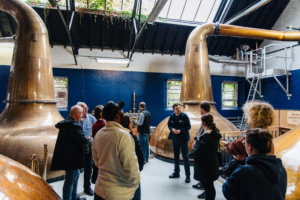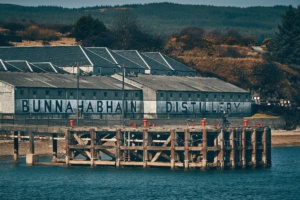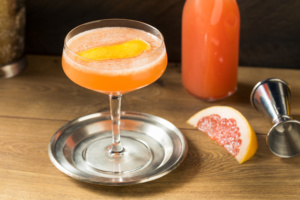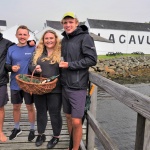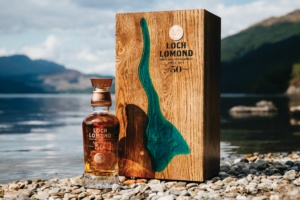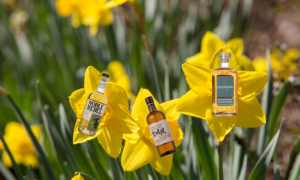Distillery Visit: The Dalmore
As rich in history as it is in flavour, Gavin D. Smith takes us behind the scenes at one of the Highlands' most legendary distilleries: The Dalmore.
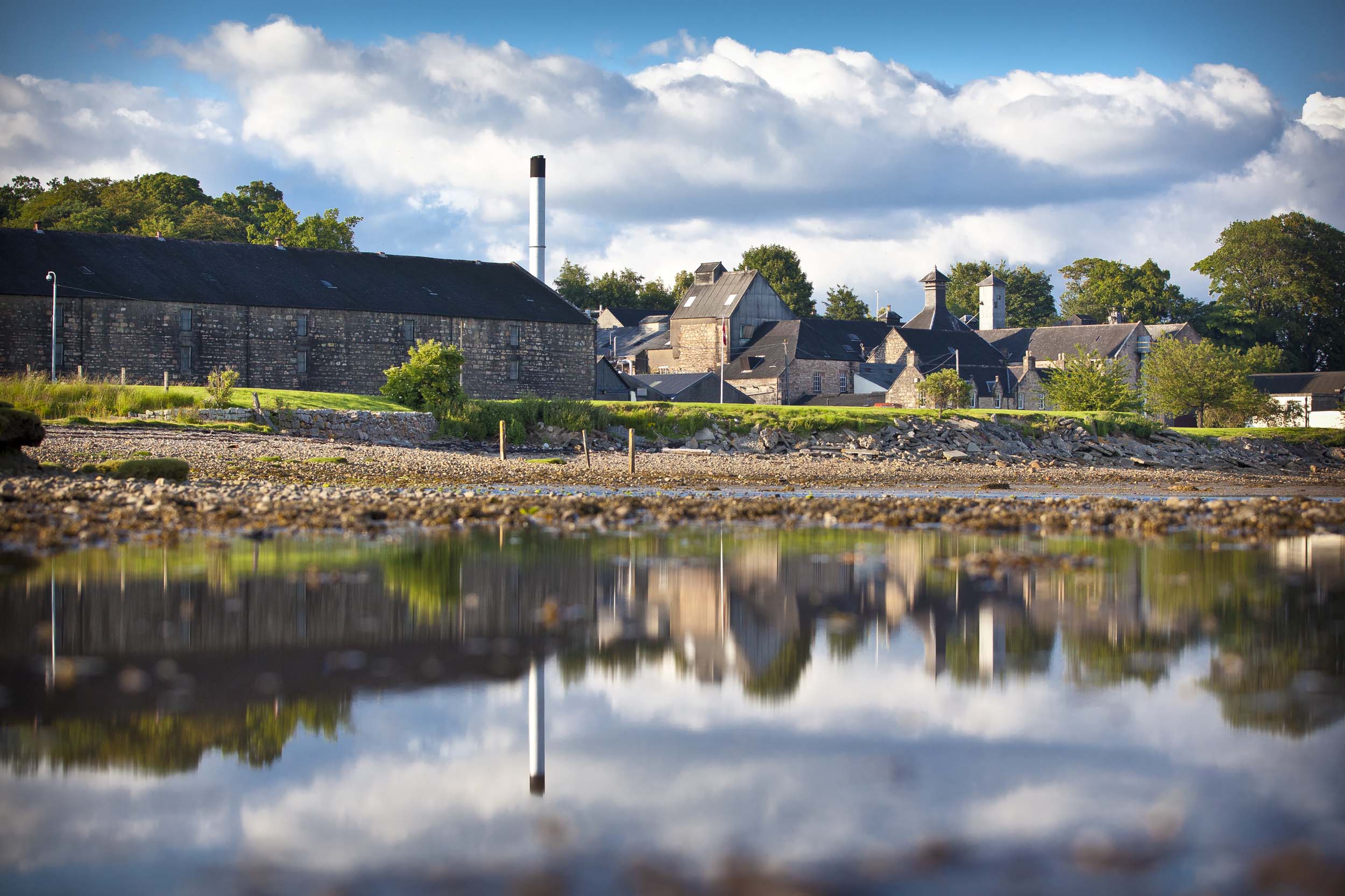
Early History
From the distillery's inception in 1839 there has always been an emphasis on creating luxurious, highly desirable drams. The founder was Sir Alexander Matheson (1805-86), a highly astute businessman who made his fortune as an international trader. Returning to Britain after retiring from the world of global commerce, Matheson turned his attention to the Scottish Highlands, from where his family originated. One of his key ambitions was to create a distillery which would make the best Highland single malt whisky possible, and he spent several months searching for the ideal location, somewhere with a source of pure, fresh water, and close to where high-quality malting barley was grown. Finally, he settled on The Dalmore's Mill estate, by the shores of the Cromarty Firth, 20 miles north of Inverness.The Mackenzies
The distillery thrived, and in 1867 Sir Alexander Matheson handed the tenancy to Andrew Mackenzie, 24-year-old son of his land agent, who was aided by his brother Charles. The Mackenzies set out to refurbish the plant, with the first spirit flowing on 27th January 1868. Andrew Mackenzie recorded in his diary that the spirit was "...fine quality and very pure." In 1870, The Dalmore became the first Scotch single malt to be exported to Australia, and 1874 saw its introduction to Asia. During that same year, two additional stills were installed alongside the original pair in order to meet global demand for the whisky. In 1900, the first bottles of The Dalmore were exported to the USA, and by this time, the Mackenzie brothers owned the distillery, having purchased it for £14,500 in 1891, five years after the death of Sir Alexander Matheson. As already noted, lengthy maturation is a feature of some modern-day expressions of The Dalmore, and records show that as early as 1882, Andrew Mackenzie was maturing his whisky for at least 12 years before selling it, while at the same time most rival distillers were offering their spirit at the age of five or six. Much longer maturation was also practiced, with whisky distilled in 1878 being transferred from new casks - termed "Distillery Wood" - to "Sherry Wood" in 1890, only to be allowed to age for a further 18 years before bottling as a 30-year-old. An earlier example, distilled in 1868, was re-filled from distillery wood to sherry wood in 1880, finally being bottled as a 23-year-old in 1891. During the First World War Dalmore Distillery was transformed into a mine assembly plant - named US Naval Base 17. Accommodation for up to 1,000 men was created and a new pier, still known today as "The Yankee Pier", was built. A mine was accidentally detonated during 1920, and the explosion and fire that followed destroyed much of the distillery. Andrew Mackenzie fought a long legal battle with the Royal Navy for compensation, and the dispute even reached the House of Lords before a settlement was achieved.Making the Spirit
The Dalmore remained in the hands of the Mackenzie family until 1960, when it merged with the long-established Glasgow blending firm Whyte & Mackay Ltd, providing that company with its first distillery. Five years later, in line with a general boom in the Scotch whisky business, distillery capacity was increased with the construction of a second stillhouse, containing another four stills, and the character of the spirit as we know it today is a direct result of operating the two stillhouses in tandem. As Daryl Haldane, Head of Experience for The Dalmore, explains, "It's a very idiosyncratic set up. We have flat-topped wash stills with the lyne arms set seven inches below the tops, which increases copper contact. The oldest spirit still dates from 1874, and within that is an internal condenser, which we didn't know about until some work was being done on the stills recently. It's basically a big lump of copper with channels in it for the spirit to run through. "We have short, dumpy stills in the "old" side, producing a full-bodied spirit despite all the copper contact. It would be very sulphury without the purifier. The spirit stills have Victorian water jackets which mean we can cool or warm the spirit as we wish. "The four stills in the "new" side, dating from 1966, are twice the size of the old ones and have no internal condenser, so the spirit is different. It's "unbalanced" distillation, and there's a huge amount of operator influence. It's manual valves and taps, and they are constantly monitoring the spirit; they really are making the whisky. The stillman is almost conducting an orchestra. Every still gives you something slightly different."Maturing the Spirit
The practice of initially ageing the spirit in ex-bourbon casks before a secondary period of maturation, usually in former sherry casks, is at the heart of The Dalmore's character. As Daryl Haldane notes, "The new-make spirit style is suitable for long maturation and for the different cask types Richard Paterson likes to use. The bourbon casks contribute to the chocolate and orange characteristics of the house style, while the rich, rounded, silky element of the spirit comes from the sherry casks." Richard Paterson has maintained the important relationship forged between Andrew Mackenzie and the Jerez sherry house of Gonzalez Byass, founded four years before The Dalmore Distillery, and still family-owned. Daryl Haldane says that "It's about cask curation - going out and finding beautiful casks for additional maturation. The first Matusalem casks from Gonzalez Byass came over in 1973, and these give lovely big spice elements to the house style, having previously held 30-year-old oloroso sherry. "In the 1980s, Richard Paterson brought in port pipes from W&J Graham's, and later he sourced red wine casks. Quintessence used five different red wines from California for an additional five years of ageing. His taste has had lots of influence on The Dalmore's style. It's about finding casks that complement the house style. Richard is always searching for something new, always exploring, he's a restless perfectionist." When it comes to the location of maturation, all casks are filled on site, with almost 60,000 casks stored in nine warehouses - four traditional dunnage and five racked. According to Daryl Haldane, "Some casks may be warehoused at our Invergordon grain distillery complex as well, but that's just two and a half miles away, and also by the Cromarty Firth. None of the spirit is matured elsewhere. It all ages where it was made."The Whiskies
Although The Dalmore has made headlines with high-priced exclusive expressions, the permanent range includes altogether more affordable bottlings. The Whisky Shop carries an extensive line-up, including 12, 15, 18, 25, 35, 40 and 45-year-olds, King Alexander III, Port Wood Reserve, Cigar Malt and Quintessence, along with the most expensive - The Dalmore 51 Year Old. Just 51 bottles were made available, with a price tag of £69,000 and sadly for prospective buyers, The Whisky Shop sold its only allocated bottle in April 2020. Even newer than the 51-year-old is the much more modestly priced 12 Year Old Sherry Cask Select, launched this autumn as part of the core Principal Collection and exclusive to The Whisky Shop in the UK. After 10 years in ex-bourbon casks, this expression has been fully finished for at least a further two years in oloroso and Pedro Ximenez sherry-seasoned American and European oak casks. And there is more to look forward to. Let's give the last word to the man whose vision and skill has done so much to shape the destiny of The Dalmore during the last five decades. Richard Paterson declares that "I have the great honour to care for the truly extraordinary whisky we create at The Dalmore. I look forward to sharing some very special releases in 2021."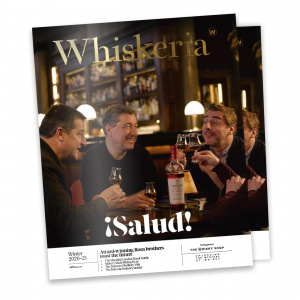 The original feature is our cover story in the Winter 2020-21 edition of Whiskeria, delivered to the door of W Club subscribers and also free with any Whisky Shop purchase in store or online. Click here to read the full Winter 2020-21 issue of Whiskeria online for free.
The original feature is our cover story in the Winter 2020-21 edition of Whiskeria, delivered to the door of W Club subscribers and also free with any Whisky Shop purchase in store or online. Click here to read the full Winter 2020-21 issue of Whiskeria online for free. 4.7/5 with 10,000+ reviews
4.7/5 with 10,000+ reviews
